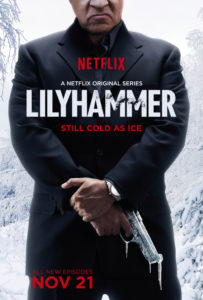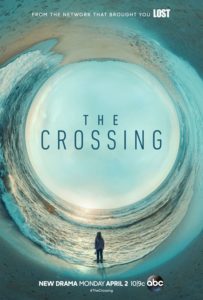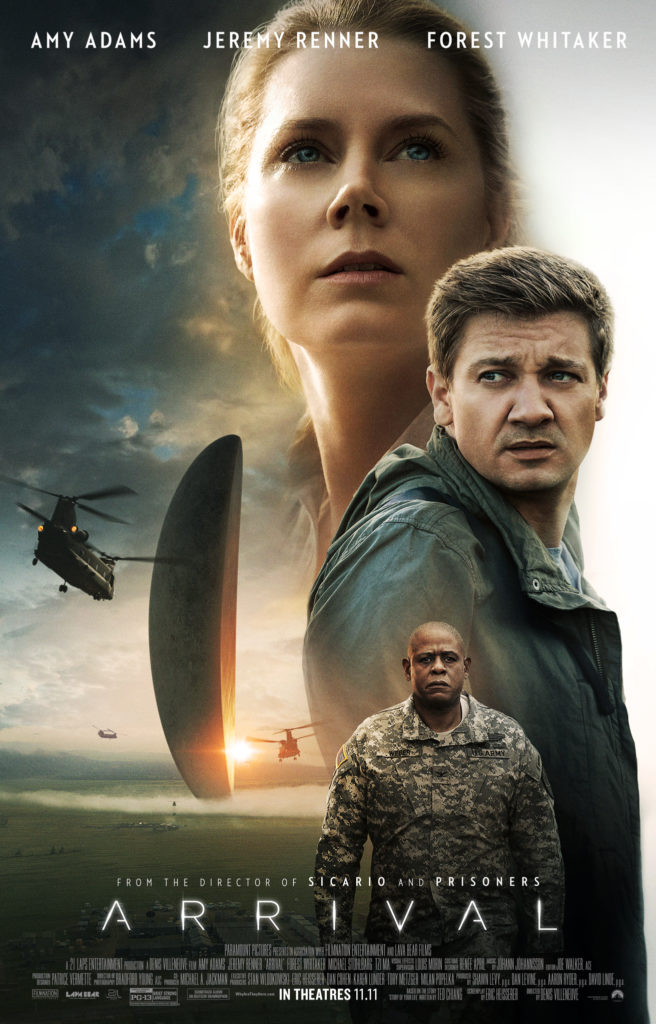In what has turned out to be a mini-series of blogs on how migration is reflected in so much popular TV and film viewing these days (Rob McNeil’s Toy Story analogy for modern-British asylum legislation and Carlos Vargas-Silva’s MCU parallels), we’ve put together a few more reviews on what has caught our eye among all the binge–watching over recent months.
Kristen McCollum , DPhil in Migration Studies
, DPhil in Migration Studies
His House on Netflix is an actual horror film about two Sudanese asylum seekers, Bol and Rial, who have just endured detention in the UK before finally being granted a house. The living conditions are terrible, with peeling wallpaper, limited electricity, and a façade so run down that passers-by mistake the house as abandoned. Oh, and it’s also haunted by a demon-like spirit.
But far from being another cliché horror film, the genre serves as a tool to illuminate a social problem and re-create an anxiety in the viewer as an attempt to replicate the emotions of the actual lived experience. As the film progresses, it becomes clear the haunting spirit is a cruel manifestation of trauma, grief, and survivor’s guilt accumulated along the journey of the two main characters. The emotional sway of the film also moves through their daily experiences outside the house. In particular, the pressure for the couple to appear ‘acceptable’ to their hosts while they await a decision on their asylum request creates an added sense of horror in the film.
While I won’t give away the ending, I will just say the film leaves space for hope and optimism. Watch His House if you want a new appreciation for the complex experience of seeking asylum in the UK, and its various obstacles which you may not have yet considered. The story prompts important questions around the adequacy of social services for asylum seekers and what types of policy might ensure that their experience in the UK is not the stuff of nightmares.
Carlos Vargas-Silva, Director of COMPAS
 Lilyhammer is an American-Norwegian series about Frank "The Fixer" Tagliano, a New York gangster, who moves to the town of Lillehammer in Norway. This small town was the host of the 1994 Winter Olympics, but other than that, nothing much has happened there. That was until Tagliano showed up. The series is about the cultural differences between Norwegians and Americans, but also about the life of new immigrants in Norway and their interaction with the “NAV” which is the Norwegian public welfare agency, and, at least according to the series, runs the immigration integration courses in the country. After a few months, Tagliano has been able to “buy” himself a way out of the integration courses from the NAV and even has twins with a local school teacher. From the outside he seems a respectable member of Norwegian society. On the side, he’s smuggling alcohol and making extra-money by running the local refugee centre. In fact, he has to fix the immigration situation of one of the local refugees who is about to be deported in order to employ him as a chef in his restaurant. I would strongly recommend the series for anyone interested in migration and who enjoyed watching The Sopranos (that might be too niche a group?). In fact, Steven Van Zandt, who plays Tagliano also played one of the leading characters in The Sopranos. The series is (mainly) in Norwegian, hence you will even learn a few more words. Most involve swearing; hence I will not repeat it here.
Lilyhammer is an American-Norwegian series about Frank "The Fixer" Tagliano, a New York gangster, who moves to the town of Lillehammer in Norway. This small town was the host of the 1994 Winter Olympics, but other than that, nothing much has happened there. That was until Tagliano showed up. The series is about the cultural differences between Norwegians and Americans, but also about the life of new immigrants in Norway and their interaction with the “NAV” which is the Norwegian public welfare agency, and, at least according to the series, runs the immigration integration courses in the country. After a few months, Tagliano has been able to “buy” himself a way out of the integration courses from the NAV and even has twins with a local school teacher. From the outside he seems a respectable member of Norwegian society. On the side, he’s smuggling alcohol and making extra-money by running the local refugee centre. In fact, he has to fix the immigration situation of one of the local refugees who is about to be deported in order to employ him as a chef in his restaurant. I would strongly recommend the series for anyone interested in migration and who enjoyed watching The Sopranos (that might be too niche a group?). In fact, Steven Van Zandt, who plays Tagliano also played one of the leading characters in The Sopranos. The series is (mainly) in Norwegian, hence you will even learn a few more words. Most involve swearing; hence I will not repeat it here.
Rosaleen Cunningham, Communications and Media Manager 
Based on Jessica Bruder’s non-fiction book Nomadland: Surviving America In The Twenty-First Century, this film received great reviews in the run-up to awards season and took best picture (among others) at the Academy Awards (watch the trailer).
Not having read the book, the migratory stories of Cormac McCarthy nevertheless come to mind (indeed The Road has been described as Apocalypse Without Borders!). Like McCarthy's work, there is much of the the great American Western here.
Frances McDormand plays the fictional character, Fern, a widow on the road, though “not homeless, just houseless”. However, Nomadland also features a number of real-life nomads, “rust-belt refugees”, whose personal accounts turn the film into a docu-drama of sorts. These are not young, restless "digital nomads" – the surprise comes to see their age; people in their 50s, 60s, and 70s, most having lost their savings and livelihoods after the 2008 financial crash.
Instead of a blatant criticism of the exploitation of the gig economy as seen in Ken Loach’s Sorry We Missed You, some reviewers have said Nomadland suggests these travelling workers are a part of a great American tradition, and that in fact the turning away from the consumerism and ownership of the great American Dream has been cathartic. But not everyone is happy with this. This excellent Guardian review by Xan Brookes points out that such a reading of the film “ignores the pathos, poverty and desperation at its core”.
 Rather cheekily, I’m squeezing in a second review – of a very different genre. We’ve often chatted in COMPAS about how the science fiction genre seems to have migration as one of its recurring themes. This is certainly the case in The Crossing. This starts with a sheriff in small-town Oregon having to deal with a tricky situation: during the night the local beach has filled with washed-ashore refugees seeking asylum from the mysterious Apex. At first, the locals think the asylum-seekers might be Russian. They’re not. These are Americans from 200 years in the future. Do not get too hooked. The second season was cancelled.
Rather cheekily, I’m squeezing in a second review – of a very different genre. We’ve often chatted in COMPAS about how the science fiction genre seems to have migration as one of its recurring themes. This is certainly the case in The Crossing. This starts with a sheriff in small-town Oregon having to deal with a tricky situation: during the night the local beach has filled with washed-ashore refugees seeking asylum from the mysterious Apex. At first, the locals think the asylum-seekers might be Russian. They’re not. These are Americans from 200 years in the future. Do not get too hooked. The second season was cancelled.
Finally, Nathan Grassi (COMPAS Administrator) who did not read the assignment correctly, reviews Arrival or as he has renamed it “Close Encounters of the Academic Kind”.
Twelve colossal spacecraft simultaneously appear in different locations worldwide and the immediate public reaction is panic. However, in a rare display of global fellowship national governments take unprecedented steps to engage in meaningful communication with the passengers of the hovering behemoths. #TeamUSA recruits Louise Banks, a highly skilled linguist to join a team of trigger-happy marines, jump on a cherry picker and probe the extra-terrestrials before they probe us.
While not specifically about migration, (no inter-planetary visa applications have been submitted) Arrival is about the complications of bridging the communication gap between very different societies. How do you say, “What is your purpose here on Earth?” to creatures that resemble oversized leather gloves, and who only converse through circular Rorschachian glyphs squirted out of their tentacles? Banks not only has to chat with these knuckly visitors but she must also pacify the antsy US army, who’d really prefer to give E.T. the ol’ Fourth of July; she must remain calm and focused while defending her methodology, to people who don’t want to listen or cooperate with her findings. It’s unlikely they read her latest Working Paper.
Banks not only has to chat with these knuckly visitors but she must also pacify the antsy US army, who’d really prefer to give E.T. the ol’ Fourth of July; she must remain calm and focused while defending her methodology, to people who don’t want to listen or cooperate with her findings. It’s unlikely they read her latest Working Paper.
On one level, the film is a moody and minimalist sci-fi flick, exploring issues of cross-cultural or -societal communication. On another, it is an elaborate parable of the obstacles of modern academic research, and the difficulties of communicating that research to policy makers and government bodies, the media and the wider public.
Either way, the lesson is: whatever your research, make sure you include a comms strategy in your project from the start otherwise, like Louise, you might find yourself trying to explain your research while the world is literally on the brink of an inter-galactic incident.
